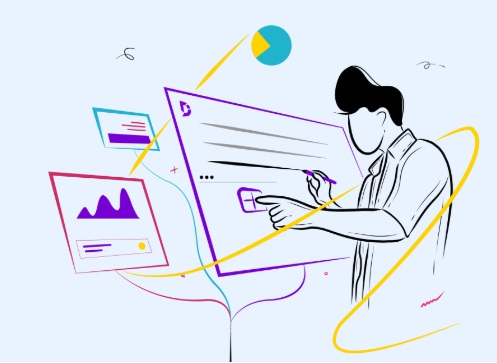Technical Documentation Matters: The Unsung Hero of Success and Efficiency
 Saurabh Mahajan
Saurabh Mahajan
In 2009, Air France Flight 447 crashed into the Atlantic Ocean, killing all 228 people on board. The crash was partly caused by improper documentation and training related to the aircraft's auto-pilot system. The plane’s speed sensors iced over, causing the autopilot to disengage. The pilots, unfamiliar with how to handle the loss of autopilot in such conditions, relied on faulty data. The plane’s manual and training did not adequately address handling stalls at high altitude, leaving the crew unprepared. Poor documentation on stall recovery procedures led to the aircraft’s uncontrollable descent, resulting in one of aviation’s deadliest accidents.
Technical documentation is the backbone of any complex system, whether it’s software, hardware, machinery, or even procedures within a company. It serves as the guide that helps users, developers, and operators understand how to interact with products, systems, and technologies. Good technical documentation not only makes a product usable but also saves time, reduces errors, and enhances the overall user experience.
In this blog, we’ll dive into the importance of technical documentation, what makes it effective, and some best practices to follow when creating clear and concise manuals.
What is Technical Documentation?
Technical documentation refers to written or visual content that explains how a system or product works. It includes a variety of documents, such as:
User Guides: Explains how to use the product or system from a user’s perspective.
API Documentation: Details the functions and methods available in an application programming interface (API).
System Architecture Documentation: Describes the design and structure of a system or software.
Installation Guides: Provides step-by-step instructions on how to install a product or software.
Troubleshooting Guides: Helps users identify and resolve issues or problems.
Release Notes: Outlines the features, fixes, and updates in each version of a product or software.
Why is Technical Documentation Important?
User Empowerment The primary goal of any technical document is to empower users. Whether your audience is technical (developers, engineers) or non-technical (end-users, customers), the documentation must make it easy for them to understand and use the system or product efficiently.
Efficiency and Cost-Effectiveness Well-written documentation reduces the need for direct support. By having a reliable reference, users can solve problems on their own, which reduces the volume of support tickets and customer queries.
Consistency and Standardization A central source of documentation ensures that everyone is on the same page. For example, if multiple teams or users are working with the same software, documentation ensures consistent use and prevents confusion.
Knowledge Transfer and Onboarding Good documentation is essential for onboarding new employees or users. It accelerates learning and reduces the time needed for new team members or customers to become proficient in using a product or system.
Compliance and Legal Requirements In some industries, clear documentation is required by law for compliance purposes. This is particularly true in regulated fields like healthcare, finance, and aerospace, where safety or data privacy standards must be followed.
What Makes Technical Documentation Effective?
Creating effective technical documentation requires more than just listing instructions. It’s about presenting information in a way that’s accessible, clear, and tailored to the audience's needs. Here are some key factors to consider:
Clarity and Precision The goal of technical documentation is to communicate complex concepts in a way that’s easy to understand. This means:
Avoiding jargon when possible.
Using simple, concise language.
Defining any technical terms that must be used.
Breaking down complex processes into digestible steps.
Structure and Organization A well-structured document is easier to navigate. Common strategies include:
Table of Contents (TOC): Essential for larger documents to give readers a roadmap of the content.
Headings and Subheadings: Use these to break down sections into manageable chunks.
Bullet Points and Lists: These help present information clearly and concisely.
Step-by-Step Instructions: Especially in guides and tutorials, breaking down the process step by step ensures users can follow along easily.
Consistency in Terminology and Formatting Using consistent terminology and formatting across all documents helps avoid confusion. This includes:
Using the same names for tools, processes, and systems.
Maintaining the same formatting for similar types of content (e.g., code snippets, commands).
Creating and following a style guide to ensure uniformity.
Visuals and Diagrams A picture can be worth a thousand words, especially when describing complex systems. Screenshots, diagrams, flowcharts, and illustrations are invaluable in:
Clarifying steps in guides (e.g., "Click here" with a screenshot showing exactly where to click).
Visualizing processes (e.g., flowcharts to explain system operations or decision trees).
Highlighting areas of focus (e.g., arrows and callouts in screenshots).
Audience Awareness The level of detail and technicality in your documentation should depend on the audience:
End-users may need simple, high-level instructions.
Developers might need deep, detailed explanations with code snippets and technical terms.
Administrators may need configuration details, security guidelines, and troubleshooting advice.
Searchability Good technical documentation should be easy to search through. This means:
Using keywords that users are likely to search for.
Adding a search function (if online or in digital form).
Organizing documents so that they’re easy to filter and navigate.
Interactivity If you are creating web-based documentation or guides, making them interactive can enhance the experience. This might include:
Expandable sections for users who need additional details.
Code playgrounds or live demos.
Videos demonstrating processes or features.
Best Practices for Writing Technical Documentation
Know Your Audience Always write with the target audience in mind. This means understanding their needs, expertise, and level of knowledge about the topic. Tailor the language, detail level, and structure accordingly.
Plan Before You Write Don’t jump straight into writing. Plan your document’s structure, outline the key sections, and determine what information is essential. This will help in maintaining focus and clarity.
Keep It Updated Technical documentation should be a living document. As systems, products, or procedures evolve, so should the documentation. Regular updates are essential to keep information relevant.
Review and Revise Technical documentation needs to be accurate and error-free. Review your documents regularly and, if possible, get feedback from users or subject matter experts to ensure clarity and correctness.
Test the Instructions Test the documentation by having someone unfamiliar with the product or system follow the instructions. This will highlight any gaps or ambiguities in your content.
Conclusion
In conclusion, technical documentation is not just a requirement; it’s an essential element of any product or system. It plays a vital role in helping users understand, troubleshoot, and efficiently use the product. Whether it’s for internal teams or customers, high-quality documentation can significantly improve the user experience, reduce errors, and enhance the overall value of a product.
By following best practices and focusing on clarity, structure, and audience needs, you can create documentation that is not only helpful but also a key asset in the success of your product or service.
Subscribe to my newsletter
Read articles from Saurabh Mahajan directly inside your inbox. Subscribe to the newsletter, and don't miss out.
Written by

Saurabh Mahajan
Saurabh Mahajan
Results-oriented and PMP-PSPO certified Project Manager with a proven track record of successfully delivering complex projects on time and within the agreed scope. With over 16 years of experience in the IT industry, I have worked in operations, technical support, change management, service management, and in project management roles, contributing to the various functional aspects of B2B and B2C products. I have led cross-functional teams and managed projects of varying scopes and sizes throughout my career. I drive project success through effective communication, strategic planning, and meticulous attention to detail all this with a pinch of humor. My expertise spans the entire project lifecycle, from initial requirements gathering to final implementation and post-project evaluation. I have great interest in project & product management and digital platform strategy. and therefore, I want to continue learning the ever-changing facets of product and technology management in a product company and contribute to building great digital products and platforms for end customers.